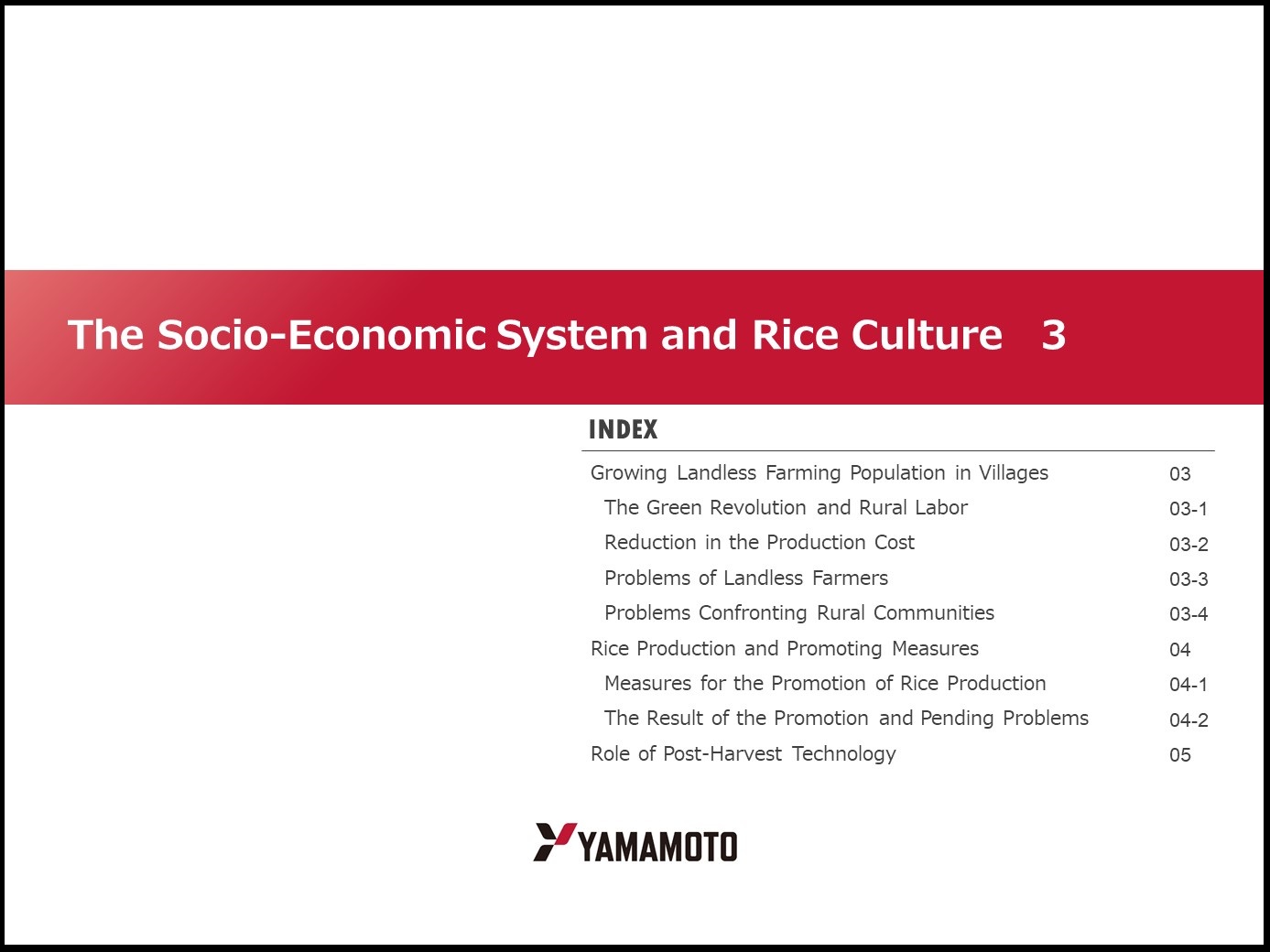22. The Socio-Economic System and Rice Culture 3
- INDEX -
Growing Landless Farming Population in Villages
The Green Revolution and Rural Labor
Reduction in the Production Cost
Problems of Landless Farmers
Problems Confronting Rural Communities
Rice Production and Promoting Measures
Measures for the Promotion of Rice Production
The Result of the Promotion and Pending Problems
Role of Post-Harvest Technology
Growing Landless Farming Population in Villages
The Green Revolution and Rural Labor
In the traditional share-work system, poor farmers and landless farmers could be employed to supply a large amount of labor, which was seasonally demanded for reaping rice. In the 1970s, the work scheme was drastically changed by the spread of high-yield varieties in the Green Revolution. The introduction of new technology in rice culture resulted in land-augmentation and labor-augmentation. As for land-augmentation, landlords with economic power had no problem providing productive goods, such as fertilizers and agricultural chemicals. Also, it was quite convenient for landlords that many labors were available within the community, reflecting the high population growth rate of poor farmers and landless farmers, and the advancement of class stratification. Thus, the old social scheme did not need to be changed in promoting the Green Revolution for increasing the rice production. The introduction of new technology was highly welcomed by landlords, tenant farmers, and landless farmers, because the yield increased and all of them could get a larger amount of rice.
Reduction in the Production Cost
In the 1980s, the limitation of the increase in the yield of rice became apparent. Reflecting the worldwide recession, cost-effectiveness in rice production began to be pursued, and there was an attempt to reduce the amount of labor that had to be invested. Landlords began to adopt dry rationalistic action patterns instead of the warm paternalistic way of treating laborers causing gradual change in the practices of reaping rice. Landlords began to restrict the participation of poor farmers and landless farmers in harvesting rice, or to cut down the wages for the reaping work. In rural communities, small-scale rural entrepreneurs and merchants gained power in the wave of commercialization, and they developed the scheme of doing the reaping work by contract, which was very convenient for landlords. As landlords rationalized farming practices and introduced machinery, poor farmers and landless farmers, who had provided the labor force for rice production, began to lose the chance to take part in the reaping work, and to be shut off from engaging in agricultural work.
